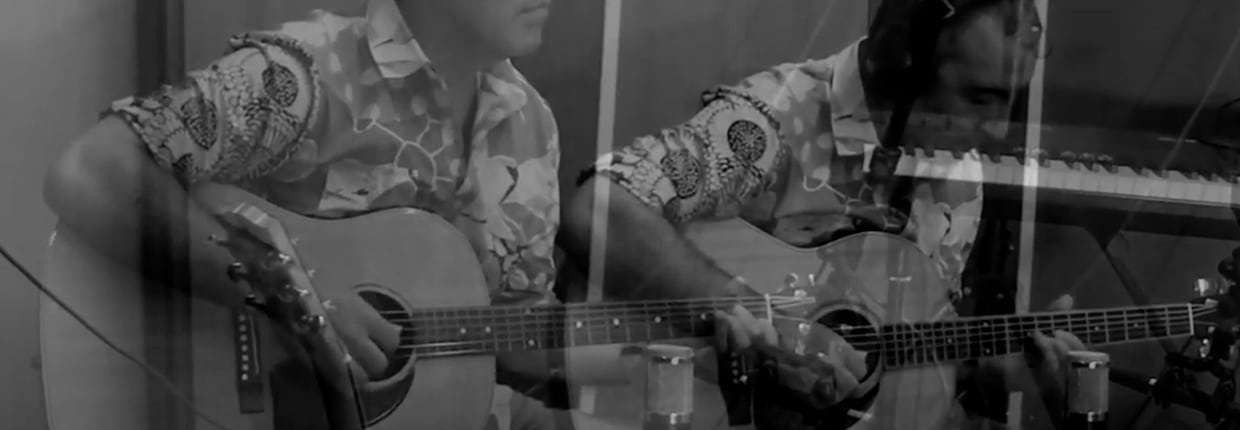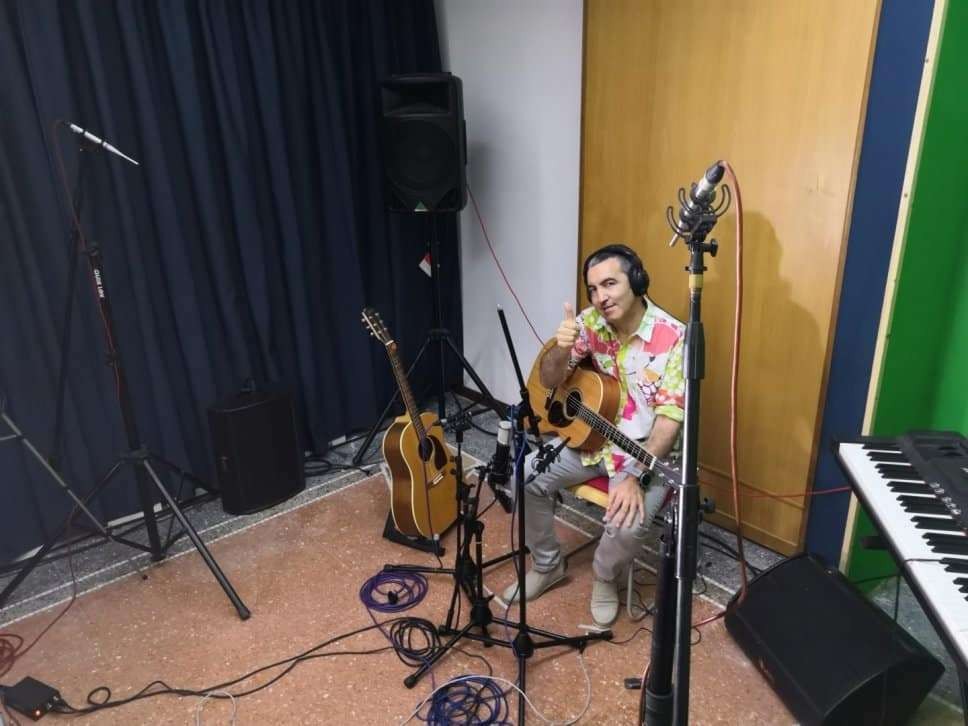Recording, Mixing and Mastering
Published on 04/07/2022

The acoustic guitar, just like all the non electric instruments, needs to be carefully recorded to get all the sound nuances it is capable of.
It is an instrument with a wide dynamic and often the musicians use it all to express themselves during the performances.
It has several sonic details depending on factors such as the musician’s touch, the right hand position (in both strumming and arpeggios), the typo of the pick (if used) or the usage of nails or fingertips. Also the hand on the keyboards has its effect on the tone. Just think about the harmonics.

Other than that, the sound arriving to the listener is made of the combination of all the sound components generated by the several vibrating parts of the instruments and, of course, by the room where the guitar is played in.
Let’s try to understand how to take into account all those different aspects.
The acoustic guitar (as well as all the stringed instruments) generate sound because of the interactions among the strained strings and mechanical structures capable of vibrating thus emitting sound.
Also the mechanical structures (namely, the harmonic table, the back and the sides) are kept under tension by the strings and by some building tricks used by luthiers.
The pickled string vibrates at a given frequency generating a mechanical impulse which als has its own harmonic content.
Strings made of different materials (think of nylon or bronze wounded steel) generate different sounds.
Moreover, each timbre has its own sound and the different ways of building the instruments enhance or reduce some features of the final sound.
The string vibration is processed by the guitar’s body via the bridge and, to a lesser extent, via the nut, the tuning machines and the headstock.
The body works as a sound amplifier while filtering the received stimulus thanks to the wood’s reaction and the methodology used for the build up of the instrument.
One can imagine that the guitar body acts as a sound box with the top being the speaker thinking for analogy with the audio systems. Going further in this way, the sound hole on the top works as a bass reflex tuning port.
The vibration modes of the guitar body depend by the wood density, by its thickness and by the bracing (a set of wood bars installed under the top to give to it a specific sound response.
All those things are to be taken into consideration when thinking about how to track an acoustic guitar. Let’s go deeper.
Since they have to catch all the details without sacrificing the dynamics and the frequency coverage condenser mics are very often the preferred choice. Sometimes ribbon mics come handy when a smooth high frequency response is what the producer is looking for.
The possibilities are quite a lot also depending on the sound engineer and/or musician’s taste. We just give these examples without claiming to fulfill all needs and tastes.
A widely used model id the Neumann KM-184. It is a small diaphragm condenser used in zillions of recordings. You cannot go wrong with it.
A little warmer sound was given by its predecessor (the KM-84 no longer in production). A similar sound is provided by the Telefunken M-60 which has, just like the KM-84, an output transformer.
Among tube driven large diaphragm microphones we have the Neumann U-67or the Telefunken U-47. They are both faithful reproductions of the golden classics. They are so good to be good for any situation.
As stated before, the sound comes for its majority by the guitar's top even if specific regions of the harmonic plate emphasize or attenuate specific sound components.
A high frequency rich sound with a lot of attack components can be picked up from the bridge area.
Close to the sound hole (just like the bass reflex port) the sound is heavy on the low frequencies.
From decades of recordings we know that the best sound can be found by pointing the mic toward the neck-body joint, close to the twelfth fret.
his is the starting point especially when using just one mic.
The distance between instrument and mic determines the amount of room sound picked up.
Sometimes it can be worth using two mics for a wider sound field. They can be used as stereo or mid-side arrangements. Several mics can also be used to pick specific zones of the guitar.
In the above video a large diaphragm mic has been used between the sound hole and twelfth fret. A wide band mic was used for the bridge and another one for the body-neck joint.
We have been saying that the room has its own part in the game. It is then possible to use specific mics to pick the room sound up.

Room mics can be placed in strategic places of the studio (usually known by the sound engineer) or at a given distance from the guitar.
The mix of all these components (paying the right attention to the signal’s phases) makes the recorded sound close to the one perceived by the listener in front of the instrument.
As you can see, to account for the several processes that the human ears do by nature, we need to go by iterations and sometimes in a counterintuitive way (it would seem to be natural to mic at the sound hole).
It is worth saying something also about the mic preamps as they can play their role in defining the acoustic guitar’s sound.
Sometimes it can be useful to use coloured preamps to add some harmonic content to make things a little warmer (but less respectful of the real sound).
The always present Neve 1073 is a classic for this role but we also have seen the Chandler Germanium successfully used for rock and pop songs.
To be closer to the natural sound of the instruments linear and wideband preamps come into the game such as the promising SPL Crescendo Duo.
Several are the alternatives and you are invited to visit the Milk Audio Store to choose the one for you.
Experimentation and research are always welcome and this case just could be the one to start with as usual when you are dealing with music. Talk to you soon!
Join us today and get 5% off your next order!

Empty cart